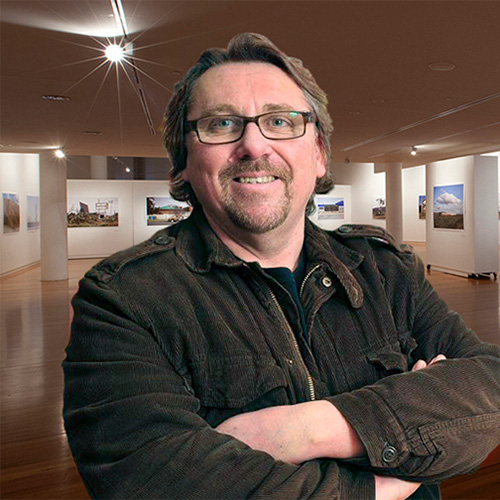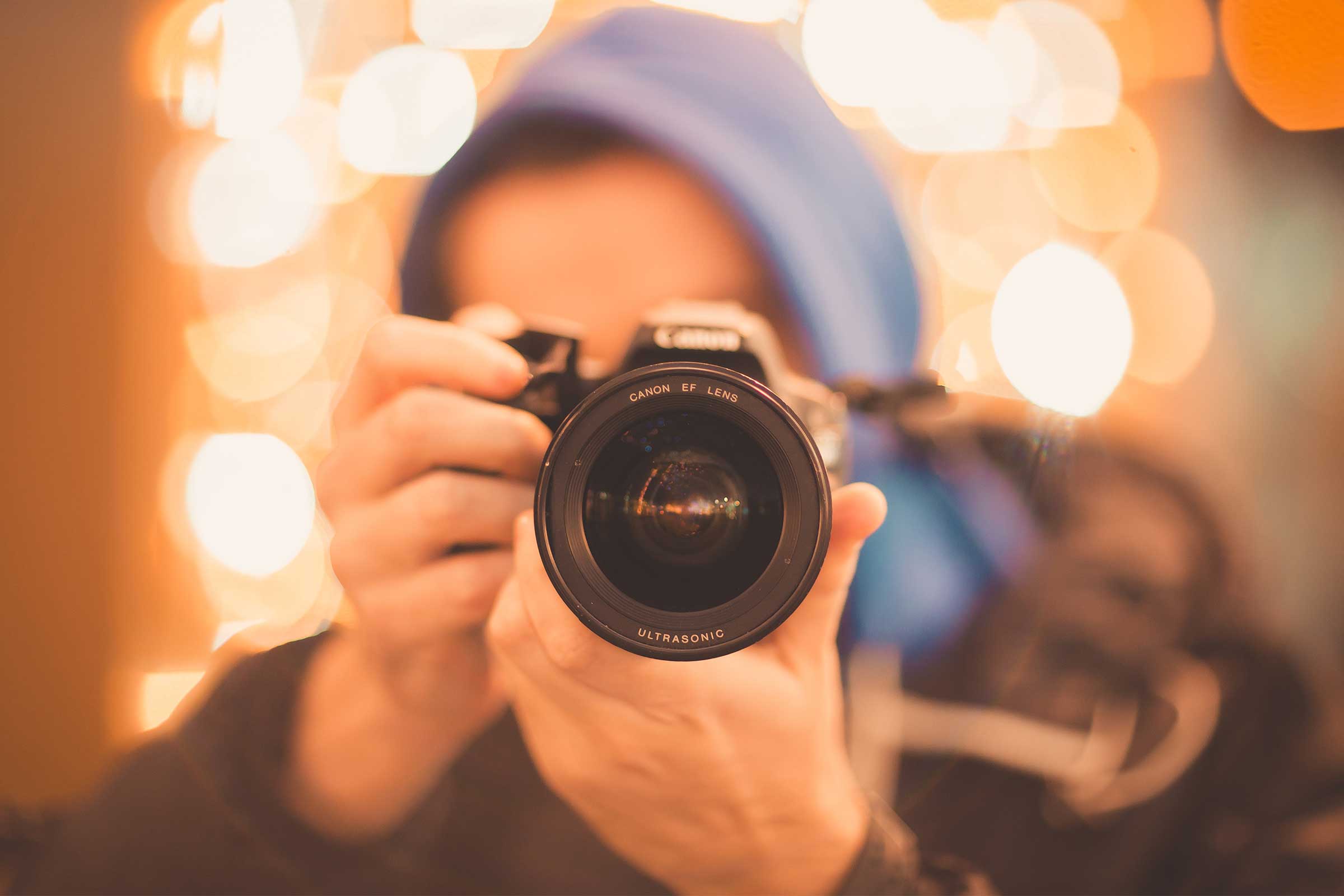They say a picture is worth a thousand words. Words like evocative, compelling, intriguing, reflective or rousing. Or how about heartbreaking, hilarious or horrifying.
Award-winning photographer and Charles Sturt University alumna Aletheia Casey knows the power a single moment – a single image – can have. For Aletheia, photography has an important documentary function. Her work makes people think, feel and question. Photography is her tool to interrogate and broaden our discussion about history.
Let’s rewind the film, flip through Aletheia’s personal album and head back to her Charles Sturt days to explore how she honed the hands-on techniques essential for her career in photography.
Pushing the button

For Aletheia, studying her degree at Charles Sturt was a chance to focus on the creative skills that ignite her imagination.
“I was home educated for most of my primary and high school education, then went to study at Wagga Wagga TAFE for (the equivalent of) Year 10. From there I was accepted into my Charles Sturt degree on the merit of my photographic and design portfolio.
“I did my undergraduate degree at Charles Sturt University in graphic design. However, I also opted to take the photography elective in the course.
“I chose to study photography as my elective as it was (and has remained) my absolute passion.”
Developing practical skills
At Charles Sturt, getting hands-on from day one is what we do, as Aletheia discovered.
“I loved studying photography at Charles Sturt. My lecturer, Jamie Holcombe, was an amazing teacher who gave me a lot of freedom and support. He also broadened my photographic language considerably.
“The hands-on experience of using the dark-room and the other on-campus photographic studios was wonderful. Understanding traditional wet darkroom techniques was, I think, invaluable as it trained my eye in a way that digital photography doesn’t do. Learning to photograph with film also made me acutely aware of the importance of waiting for exactly the right moment, rather than firing the shutter continuously.
“Learning to develop and print my own images really helped train my eye in regard to composition, mood and understanding tone and emotional content in an image.”
Challenging yourself to be creative

For Dr Jamie Holcombe, Head of Photography at Charles Sturt University, dark-room techniques remain important, helping students foster their creativity.
“We work with students to find new ways of seeing things – avoiding the generic or the clichéd. For instance, if you try and photograph something on the concept of ‘time’ – how can you do that in a new, interesting way? Remember, there are no rules. And probably, taking a photograph of a clock is not going to capture someone’s attention. Try and ‘break the circuit’ and think differently. It’s the same idea as when you move into working in the real world. If you are commissioned to, say, photograph a pizza – how do you make it interesting, and so enhance your career and reputation?
“This can be hard in the avalanche of images that are published every day in media, advertising and social media.
However, surfing the web for inspiration for your photographic practice is unlikely to have as big an impact as surfing your own imagination. Because that is unique.
“One way to challenge your practice can be to do work with film. It slows you down and makes you consider each image before taking it. And, indeed, in the commercial field, film is becoming more popular because it has a sense of authenticity and originality. That’s why we still teach students dark room techniques.”
Career exposure
Since graduating, Aletheia has forged a global career.
“Initially I wasn’t sure if I wanted to become a graphic designer or a photographer. However, after finishing my degree I knew that I wanted to pursue documentary photography as a career. Subsequently, I worked for several years as a visual journalist for TV stations in Australia and the UK to support myself, while I worked on producing the documentary photography that resonated with me on a personal level. I now lecture at the Royal Academy of Arts in The Hague, and at The London College of Communication, where I am an associate lecturer. Teaching is a great joy for me, and helps to inspire and inform my own photographic practice.
“There have been many great moments in my career. Firstly, being named a finalist in the 2019 National Photographic Portrait Prize was a lovely experience. Secondly, forming the collective ‘Lumina’ with Morganna Magee and six other photographic artists has been a huge highlight for me. Our collective is incredibly supportive of each other, both on a personal and professional front, and forming this collective has inspired me greatly.
Picturing the world
Aletheia’s career has taken her around the world.
“In addition, a more recent highlight was taking part in a symposium at Kings College in London on War, Art and Visual Culture. I spoke about my continuing photographic work on Australia’s frontier wars and the aftermath of a distorted historical narrative. Another extremely satisfying achievement was giving a TEDx talk in Geneva on my work. Having to speak in front of such a large international audience was a great experience.”
And that global trajectory is not uncommon for Charles Sturt grads, as Dr Holcombe points out.
“We have alumni who have taken their careers around the globe. To take just one other example, an alumna worked in a photographic company in Sydney straight after graduation. She then moved to Bali to work in digital imaging, followed by Abu Dhabi to work at Harper’s Bazaar. Now she is photographing for lifestyle magazines in Denmark.”
The focus of the future
Aletheia is not standing still when it comes to her career in photography.
“I want to continue to produce work that talks about Australia’s narrative of history. It is very often excluded the violence of the frontier wars that were fought during colonisation. I feel we, as a nation, have yet to truly recognise the trauma of our history.
“I hope that my photographic work might open up this discussion regarding Australia’s history. Hopefully it can educate people about a more inclusive and truer version, which includes diverse voices and stories of people who were affected by colonisation. I want my work to emotionally connect with the audience, and by doing so, initiate understanding and change.”
Dr Holcombe says this ‘social’ aspect of photographic practice is an important part of learning.
“We don’t teach people to replicate photos – such as taking a fashion photo like millions that have been taken before. But we do teach things like inclusivity and equity in representation, alongside the technical aspects of the craft.
“We also teach practice-led critical theory. To critically analyse the medium, your work and industry will help move all of them forward in a positive way. This also feeds into talking about, ‘selling’, your work. In addition, it helps you navigate the public sphere in photography, such as marketing yourself and protecting your images. It helps build a sustainable career in photography.”
Picture your future career in photography
For Dr Holcombe, the future of photography is bright.
“Above all, the key to being employable in the future – and forging a rewarding career in photography – is creativity.
As automation takes over more industries, that creativity is what will stand photography – and photographers – in good stead. In short, finding creative outlets for your passion is crucial. Challenging yourself and being innovative will help drive your successful career.”
In short, finding creative outlets for your passion is crucial. Challenging yourself and being innovative will help drive your successful career.”
With Charles Sturt University communication courses, you can bring your ideas to life and build a career in photography. Let’s get to work.


You must be logged in to post a comment.